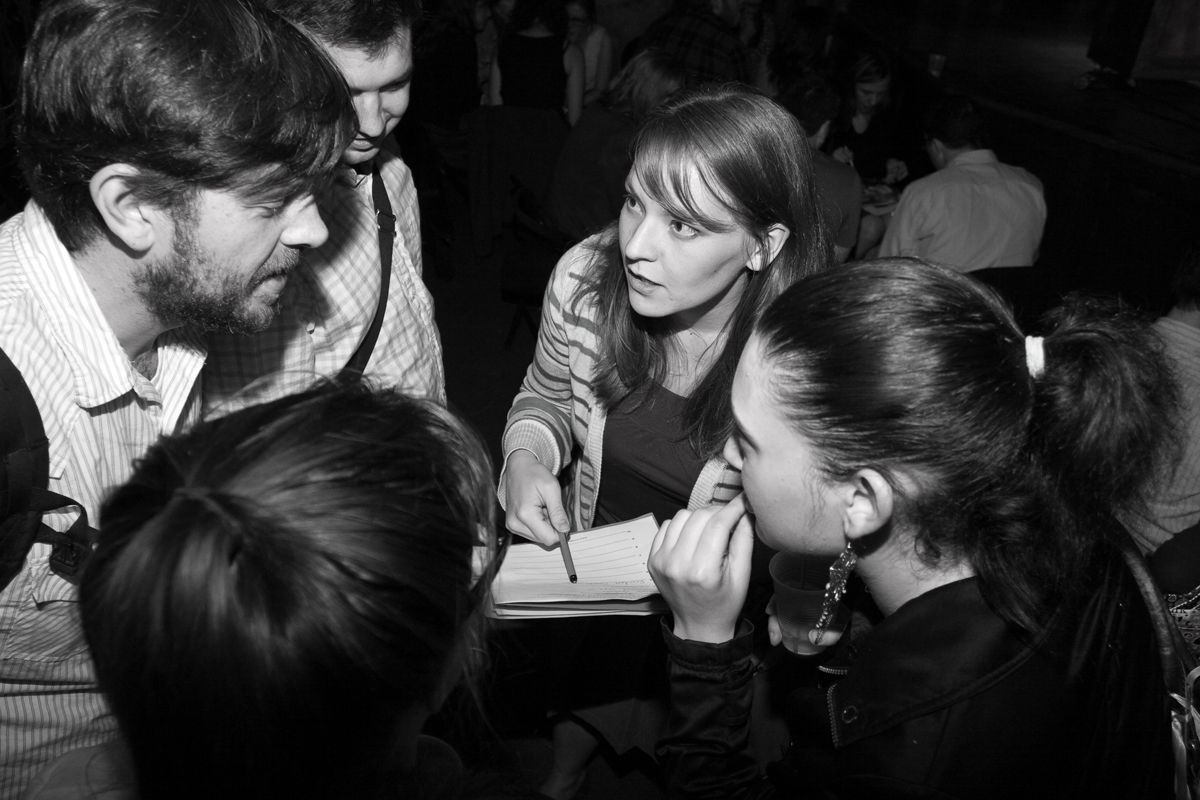Team Building Events: How Do You Divide a Big Group into Smaller Teams?
 Team building group size
Team building group size
Here’s one I get a lot: a business owner, department manager or HR/events director contacts me about a corporate group bonding activity for the office in New York City or elsewhere, and they know they want to break the larger group down into sub-groups. But how should it be done?
Actually, this is a crucial element of planning competitive team building, NYC and beyond, and as someone who has produced hundreds of these for nearly a decade, I can’t emphasize enough its importance. Who is on which team, and why? If you truly want your attendees to get the most out of the experience that they possibly can, you should absolutely be asking yourself this question.
For most companies, there aren’t really that many opportunities like this over the course of the year: a structured event designed to address teamwork, boost morale, or even just allow staff to get to know one another better. As such, it is vital that planners take advantage of these rare occasions to make sure that your specific goals and objectives are achieved. This is true for a retreat or onsite activity, but doubly so if your event is a convention or other gathering of people who are never in the same room, save for this one brief moment. Don’t let this chance to make a real impact slip by – grasp it with both hands!
Here’s what you, the planner, should be asking yourself if your event calls for breaking the larger group down into smaller groups (and which I will ALWAYS ask you during the customization process of one of TrivWorks’ events):
- What Is the Main Objective of the Event? – Are you seeking to reinforce the cohesive bond among existing work groups, or to allow people who don’t typically cross paths at work (or at all) to get to know one another? This will clearly impact your decisions on who to place at which team, and why.
- How Big Should the Smaller Teams Be? – You have likely been grappling with from the start – however, before you begin making lists of teams you should probably ask yourself: what is the optimal sub-group size? This depends on a few factors: what they will be doing together, how engaging it will be, and the overall group size come immediately to mind. You should also consider practical aspects such as your venue size, layout, and availability of chairs, tables and other necessary furniture needed for breakout groups.
- What Should We Do with the Managers? – Very often (especially for events involving a competition or contest) the managers will be there, right alongside the worker bees. If we’re planning to divide into teams, what do we do with the brass? Again, think big picture: is our goal here to address issues within the work teams, such as communication, collaboration and trust? Or are we simply trying to make everybody more comfortable working with one another?
- Where Do We Put the New Hires/Staff from Other Offices? – Very often at these events, we’ve got two distinct groups of attendees: those who have been working together for a while and have already formed bonds, and those who are completely green – either newly hired to the company or, in the case of conferences, conventions and retreats, visiting from other offices across town, the country or the globe. Because of the infrequency with which many firms have these sorts of meetings, it is fairly typical to want to integrate these people, rather than isolate them in their own teams (I can’t help but think of the infamous “Table 9” from Adam Sandler’s The Wedding Singer).
Once you have painstakingly settled on who will be with whom and why, it doesn’t end there. Here are a few more things to think about:
- When/How Do I Inform Them of Their Teams? – Should it be done in advance of the event, via Email? Will we break them down right there at the event, moments before we start?
- What Happens if People Don’t Show Up? – You’ve poured your heart and soul into perfectly parsing your group, but now here we are at the event, and so many people aren’t here – schedule mix-ups, client business, sick kid, you name it. Now we’ve got lopsided teams. Can we combine them? Divide them further? What makes the most sense, given the goals and who is actually here in the space?
- Where Do We Put Stragglers/People Who Didn’t RSVP? – Another thing that happens: people run late, as in halfway through the event late. Is it TOO late to join in? Also, folks who you weren’t expecting to arrive, but here they are. What happens to them?
A lot to think about. I will say this, however: even with so many factors to consider and things out of your control, don’t over-think it. The fact that you’ve given ANY amount of attention and effort into how to break the group down, rather than just saying, “okay, form teams” means that your group will likely benefit from having a meaningful shared experience with those around them. Subsequently, they will have an increased likelihood of taking these learnings back to the office and actually employing them – resulting in more efficiency, better teamwork and, ultimately, increased revenue. Click here for more info!